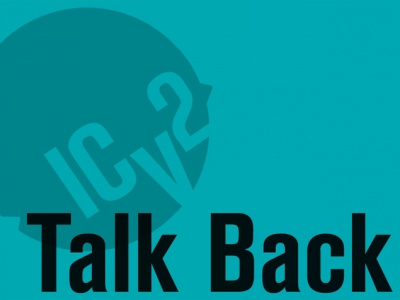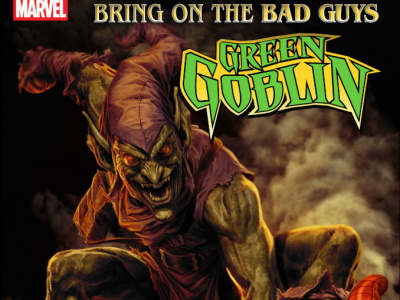Confessions of a Comic Book Guy is a weekly column by retailer Steve Bennett of Mary Alice Wilson's Dark Star Books in Yellow Springs, Ohio. This week, Bennett continues his controversial discussion of comic formats:
First, a couple of quick things about last week's column:
Tony Caputo was good enough to point out that a comic book is not, technically a 'pamphlet;' but then, I was using the 'p word' as a jaunty pejorative for the wretchedness that is the current format. It's a meager, feeble, shadow of its former self that's been nibbled away by countless cost-saving measures over the years in height, width and page count until we have today's flimsy, insubstantial article. And, worse of all, they're not done; recently Marvel shaved yet another fraction of an inch off of their comics -- and nobody seemed to notice, let alone care.
And please, forgive my bit of over the top doom-saying; I wasn't seriously suggesting every comic book publisher could or should immediately abandon the comic book as we currently know it and return to its 'genuine 'comic magazine' format, readily available on newsstands' roots. In addition, while it's certainly true such ventures are probably too expensive for publishers that don't have the deep pockets of a Time-Warner, Marvel has done a fine job of reaching out to a new audience with their economical 'Flipbook' format titles, which I can find at my local Kroger's.
The truth is that the comic book as it now stands will continue to exist just as long as it remains a relatively inexpensive publishing option for both major corporations and anyone wanting to express themselves. The only cheaper method currently available is the Internet, and the recent 'defection' of Carla Speed McNeil's Finder to the web should definitely be considered a sign of things to come.
Naturally the direct sales market needs the comic book as is, but again, let's go to the numbers; right now the top sales a DC/Marvel title can generate (but, it's important to note, not sustain) is around 200,000. All available evidence suggests (a) we are not growing in any substantial way, (b) we'll never return to previous higher circulation levels and (this is the real killer) (c) the numbers are going to continue to go down.
That is, unless we fundamentally change how we do business and soon. That's not 'doom-saying', that's just facing up to cold, hard facts.
I'm going to throw out a couple of words we don't hear nearly enough in our industry; 'value' and 'content'. And after some of your responses I think I really need to stress I don't mean either of those words in their moral context (as in 'good, wholesome family values' or 'mature content'). I mean in the sense a $2.50, 32-page issue of Batman is a terrible value compared to an issue of Shonen Jump, and when it comes to content; Batman is maybe a fifteen minute read while Shonen Jump can take an hour or more.
If I've been rough on 'the pamphlet,' it's because it doesn't offer much in the way of either value or content. The only thing Batman has over Shonen Jump is its lower price, but as someone who actively tries to sell comics to kids and their parents (the ones who have the actual money) on a regular basis, I can tell you price isn't always the deciding factor. Value can be a pervasive argument, especially when dealing with someone on a fixed budget who has to decide between buying a 32 page, $2.25 Betty & Veronica comic and a 122 page, $4.99 W.I.T.C.H. graphic novel.
And while I keep hearing the same 'we'd sell more comics if they were only cheaper' refrain from some retailers, experience has repeatedly shown that's not the case for 'regular' comic book fans either. Recently a number of publishers have tried to win over readers by selling the first issue of a new series for a $1 or less, and while some of them have sold spectacularly well, I can tell you most of these 25, 50 and 75 cent comics have not flown off the shelves at Dark Star. I have never heard a single cry of 'Only a quarter? Sure, I'll take one!' because, ultimately, if you don't want one, 25 cents is still too much to pay for an issue of Vampirella.
My argument against lowering the cover price of comics has always been that over the years both Marvel and DC have repeatedly given the market $1 and under titles, but with the exception of Countdown to Crisis (199,704 copies sold) they haven't worked. Of course my boss, Mary Alice Wilson, always counters that these comics didn't sell well because they (1) weren't well done or (b) of limited appeal.
But, just say, DC listens to these pleas and retroactively decides that not only will Infinite Crisis #1 cost $1 and be 80 pages, every subsequent issue will be in the same format. We'd have a product with both incredible value and content, so naturally retailers would want to order extra high on #1 (so they could have copies when #2 and #3 arrive) and we could reasonably assume DC would anticipate higher than average reader interest and overprint by at least 10-20% over the final orders. So, sales would go up substantially, right?
Sadly, probably not. Because as nice as all of the above sounds, my first question would have to be, 'Who are we supposed to sell it to?' I mean besides the 200,000 or so who (hopefully) are already showing up at our stores every Wednesday? While this version of Infinite Crisis is an incredible value, it isn't worth much to someone who not only doesn't care passionately care about the ultimate fate of the DC Universe, doesn't know what a DC Universe is.
And as for newsstands, grocery stores, etc., I really can't seem being all that interested in it. Remember, it was the comic books' relative cheapness that got our spinners tossed out in favor of a more profitable product line in the first place.
But of course that's just what I think; it would be nice if Marvel and DC could prove me wrong.







